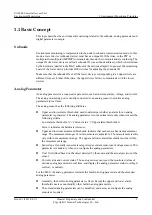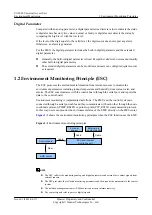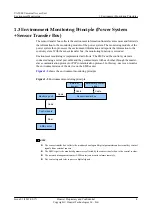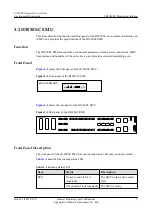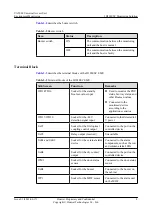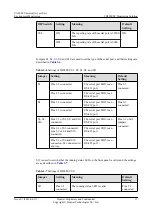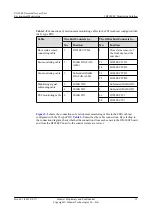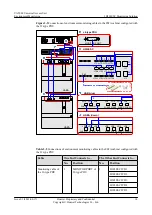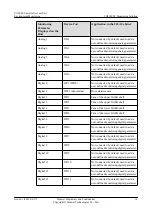
1.1 Basic Concept
This topic describes the environment monitoring related to the subnode, analog parameter and
digital parameter concepts.
Subnode
Environment monitoring is implemented in the node to subnode communication mode. In this
mode, a lower device (subnode device) must have a unique ID. Otherwise, in the P2P or
multipoint-to-multipoint (MP2MP) communication mode, the communication is confusing. The
unique ID of a lower device is called a subnode ID (or a subnode address), which is determined
by the hardware (similar to the MAC address of the network adapter). In general, the monitoring
board of the lower device provides DIP switches for adjusting the subnode ID.
Make sure that the subnode IDs of all the lower devices corresponding to an upper device are
different from each other. Otherwise, the upper device fails to communicate with the lower
devices.
Analog Parameter
An analog parameter is a consecutive parameter, such as the temperature, voltage, and current.
The analog monitoring port is usually connected to an analog sensor to monitor analog
parameters in real time.
The analog sensor has the following attributes:
l
Upper and lower alarm thresholds: used to determine whether an alarm for an analog
parameter is generated. The analog parameter is in the normal state only when it meets the
following criteria:
Lower alarm threshold±Δ
≤
Current value
≤
Upper alarm threshold±Δ
Here, Δ indicates the hardware tolerance.
l
Upper and lower measurement thresholds: indicate that each sensor has its measurement
range. The measurement ranges of certain sensors are adjustable. The measurement results
vary with the measurement range. The upper and lower alarm thresholds must be within
the measurement range.
l
Sensor type: Generally, sensors are categorized as current sensors and voltage sensors. This
parameter is mandatory when you configure the analog parameters.
l
Unit: It is defined based on the object detected by the sensor and the actual precision of the
sensor.
l
Current value and current status: The analog sensors can report the monitored values of
various analog parameters in real time, and display the analog parameter status (overhigh,
overlow, or normal).
For the EMU, the analog parameter includes the built-in analog parameter and the extended
analog parameter.
l
Generally, the built-in analog parameter is fixed. Except the upper and lower alarm
thresholds, users cannot modify other built-in analog parameters.
l
The extended analog parameters can be modified, and users can configure the analog
sensors as required.
UA5000 Universal Access Unit
Environment Monitoring
1 Environment Monitoring Principles
Issue 01 (2012-08-17)
Huawei Proprietary and Confidential
Copyright © Huawei Technologies Co., Ltd.
2








